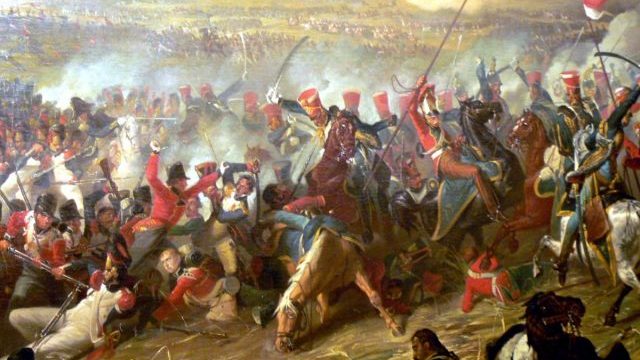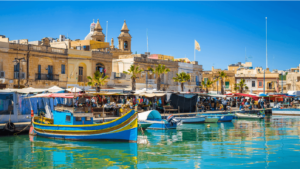The Country that is today called Belgium is, effectively, constructed from two very different communities – Dutch and French – that have found themselves united into a single nation largely through an accident of history. And with the country sitting at the crossroads between north-west Europe, Germany and France, it has been the scene of great and traumatic events on numerous occasions.
Medieval & Renaissance Periods
This region of Europe, together with the Netherlands to the north, effectively formed part of the domain of the Habsburgs for much of the Medieval and Renaissance Periods. The Habsburgs were a family dynasty that, over many centuries, provided monarchs to Spain, Austria, Bohemia (Czech Republic today), Hungary, the Netherlands and the Holy Roman Empire.
By the end of the 16th century the Dutch in the Northern Netherlands had started an insurrection that would lead to their eventual independence in 1648. However the Southern Netherlands, or sometimes it was referred to as the Austrian Netherlands (modern day Belgium), remained under Habsburg control until the Napoleonic Wars other than for a short interlude of French control under Louis XIV.
Napoleonic Period
The Napoleonic Wars saw the demise of the Holy Roman Empire. As the Southern Netherlands formed part of the Holy Roman Empire its future ownership and direction became a Europe-wide issue. Napoleon was keen to acquire the country for France while the allies ranged against him, most notably Britain and the (Northern) Netherlands, were keen to prevent this.
From 1794 to 1815 the Southern Netherlands were ruled by France but at the Conference of Vienna in 1815, held while Napoleon was still a prisoner on Elba, the Southern Netherlands were effectively ceded to the Dutch Royal House of Orange resulting in the creation of the United Kingdom of the Netherlands.
As a result later that year, army units from the Southern Netherlands that had previously formed part of Napoleon’s Grand Armee now found themselves as part of the Dutch Army fighting with the allies against Napoleon at the Battle of Waterloo. Interestingly these were the only troops that were deployed forward of the famous “ridge” by the Duke of Wellington at the start of the battle (other than at the three fortified farmhouses). From a Belgium point-of-view, there has always been speculation about Wellington’s motivations over this deployment.
Belgium Revolution of 1830
The newly acquired Southern Netherlands was an ethnic mix of Dutch and French; a combination that was not going to sit well with the Northern Netherlands. Resentment soon grew among the inhabitants of the Southern Netherlands who claimed inequality between themselves and their, now, countrymen in the north. There were a number of issues:
- There was far greater prosperity in the northern Netherlands due to their more sophisticated trading systems. This was exasperated by Amsterdam (in the north) being the largest port and the most important trading centre in the country.
- While the inhabitants of the south made up over 60% of the population of the entire country, they had the same number of parliamentary representatives as the, less than, 40% in the north. This allowed the north to dominate the political agenda. Additionally, the south was under-represented in the army.
- The Dutch in the north had developed over many centuries their economy through free trade, while the less-developed economy in the south was more accustomed to protection and tariffs. The policy of free trade imposed by the north drew in cheap wheat through Antwerp from the Baltic depressing agriculture in southern grain-growing regions.
- The French-speaking community in the south were concerned at moves to make Dutch the official language of the entire country.
- There was a religious divide; the Roman Catholic Bishops in both the Dutch and French communities in the south, both of which were overwhelmingly Catholic, were suspicious of the motives of the Protestant north.
As the south rebelled against the King and government authority from the north, European powers met to decide how to manage the situation. Agreement was sparse but fear that France might take over the area by force resulted in the new country of Belgium being established in the Treaty of London in 1830.
Among the signatories guarantee Belgium’s existence was Prussia. Germany’s invasion of Belgium in 1914 was a breach of their agreement towards Belgium and set the scene for much of what was to happen in the First World War.
Strategic Position
Belgium, in all its incarnations, can never be accused of being militaristic. However, the land of Belgium has been one of the most fought over areas of Europe. These include campaigns by the English and Dutch against Phillip II of Spain and a century later against Louis XIV in the wars of Spanish Succession and Jenkins Ear. The Napoleonic Wars climaxed at Waterloo which is on Belgium soil.
And twice in the 20th Century European (and American) armies have fought for control of the continent in two World Wars.
Ramillies and Oudernarde, Waterloo, Mons and Ypres, plus the Liberation of Belgium in 1944 is a list that forms a spine to European military history over the past three hundred years. What they all have in common is that these conflicts all took place on Belgian soil making, for those with an interest in history, a country that is a military Mecca.




